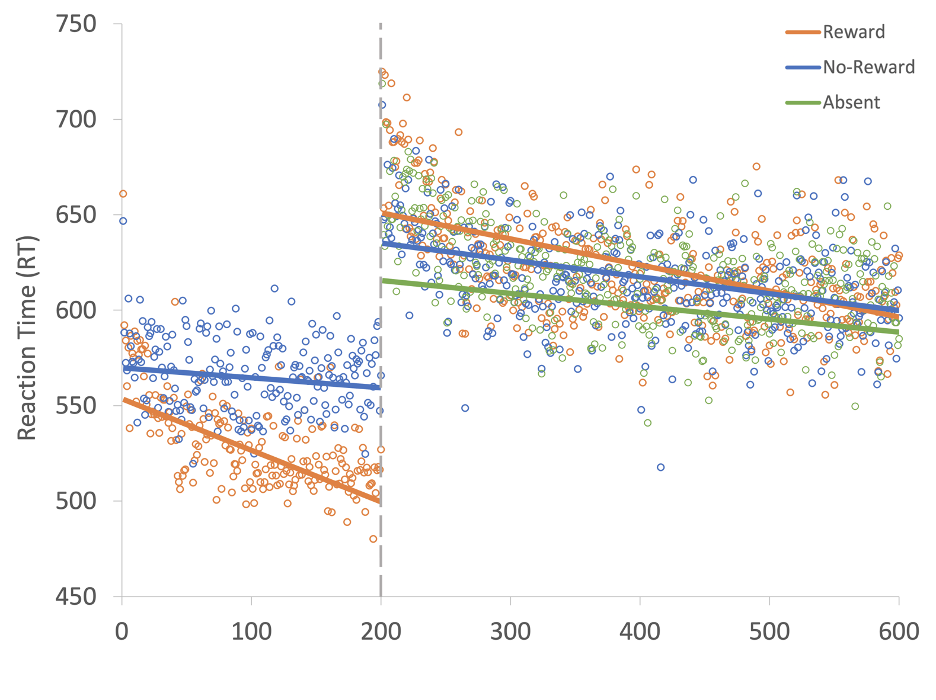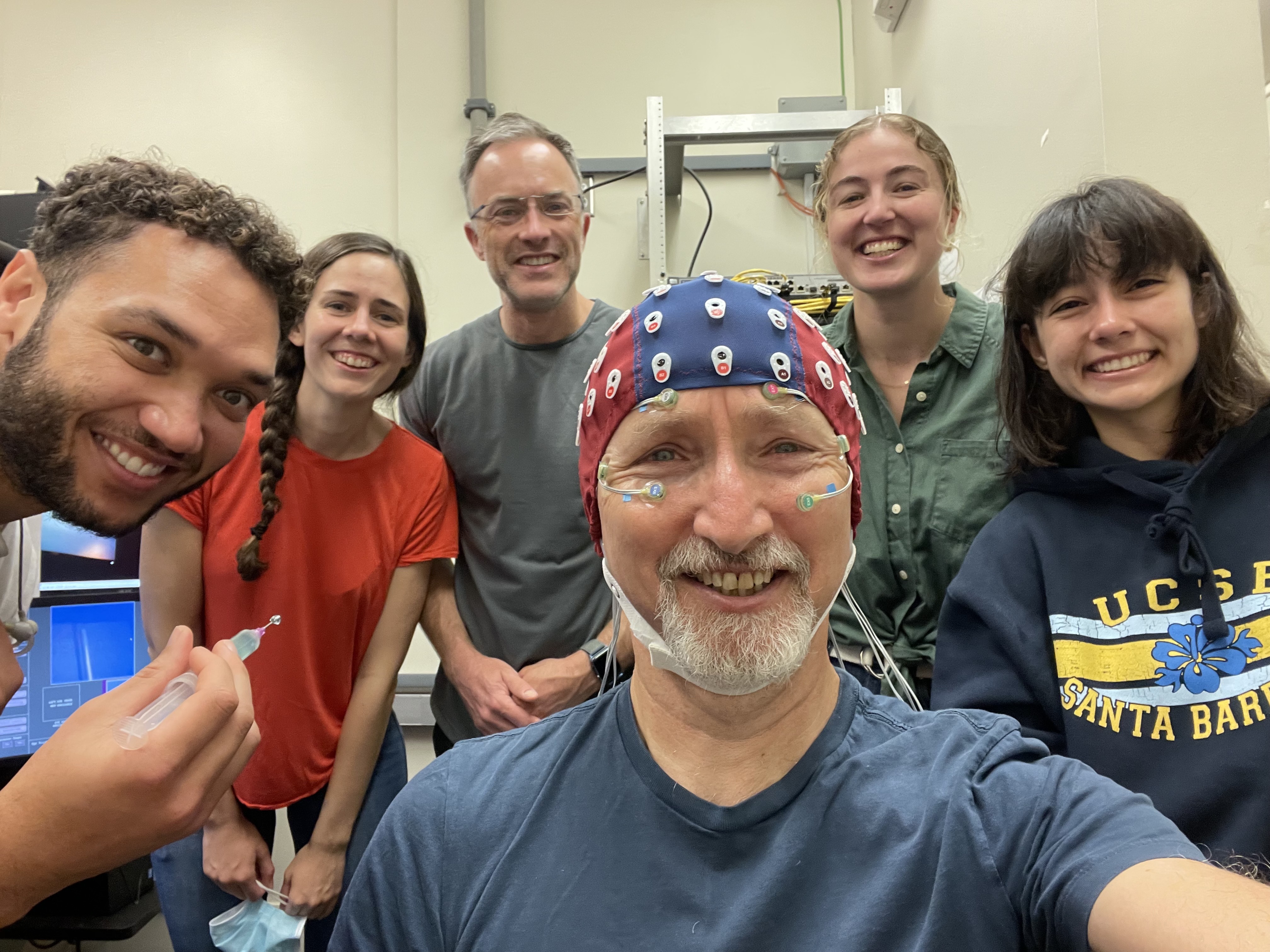Welcome to the UCSB Attention Lab
Embracing scientific curiosity, courage, and community.
PI: Barry Giesbrecht

Attention is a core cognitive function that allows us to manage and prioritize processing of the sensory environment, internal thoughts, and actions. In many life-critical tasks, optimal behavior requires prioritizing, attending, encoding, and remembering relevant information. Our work is dedicated to uncovering the cognitive and neural mechanisms of the human attention system and its interaction with other cognitive functions both inside the lab and out in the real world. Learn more about our research.
Recent Publications
Non-invasive monitoring of cardiac contractility: Trans-radial electrical bioimpedance velocimetry (TREV) (Stump et al., 2023)
We describe methods and software resources for a bioimpedance measurement technique, ‘trans-radial electrical bioimpedance velocimetry’ (TREV) that allows for the non-invasive monitoring of relative cardiac contractility and stroke volume. After reviewing the relationship between the measurement and cardiac contractility, we describe the general recording methodology, which requires impedance measurements of the forearm. We provide open-source Jupyter-based software (operable on most computers) for deriving cardiac contractility from the impedance measurements. The software includes tools for removing variance associated with heart rate and respiration. We demonstrate the ability of this bioimpedance measurement for tracking beat-to-beat changes of contractility in a maximal grip force production task.
Habituation of the stress response multiplex to repeated cold pressor exposure (Bullock et al., 2023)
Humans show remarkable habituation to aversive events as reflected by changes of both subjective report and objective measures of stress. Although much experimental human research focuses on the effects of stress, relatively little is known about the cascade of physiological and neural responses that contribute to stress habituation. The cold pressor test (CPT) is a common method for inducing acute stress in human participants in the laboratory; however, there are gaps in our understanding of the global state changes resulting from this stress-induction technique and how these responses change over multiple exposures. Here, we measure the stress response to repeated CPT exposures using an extensive suite of physiologic measures and state-of-the-art analysis techniques.
The persistence of value-driven attention capture is task-dependent (Milner, MacLean, & Giesbrecht, 2022)
Visual features previously associated with reward can capture attention even when task- irrelevant, a phenomenon known as value-driven attention capture (VDAC). VDAC persists without reinforcement, unlike other forms of learning, where removing reinforcement typically leads to extinction. In five experiments, factors common to many studies were manipulated to examine their impact on VDAC and its extinction. All experiments included learning and test phases. During learning, participants completed a visual search task during which one of two target colors was associated with a reward, and the other with no reward. During test, one week later, participants completed another visual search task in which the reward association was not reinforced.

Investigating Search Among Physical and Virtual Objects Under Different Lighting Conditions (Kim et al., 2022)
By situating computer-generated content in the physical world, mobile augmented reality (AR) can support many tasks that involve effective search and inspection of physical environments. Here, we conducted a wide-area outdoor AR user study using a commercially available AR headset o compare (1) user interactions with physical and virtual objects in the environment (2) the effects of different lighting conditions on user behavior and AR experience and (3) the impact of varying cognitive load on AR task performance.

Join Us
Our lab offers the opportunity to learn how to conduct behavioral and cognitive neuroscience experiments in a supportive environment. One of our top priorities is to mentor and assist all students and lab members so that each person reaches their full scientific development potential.
Learn more about how to get involved.



